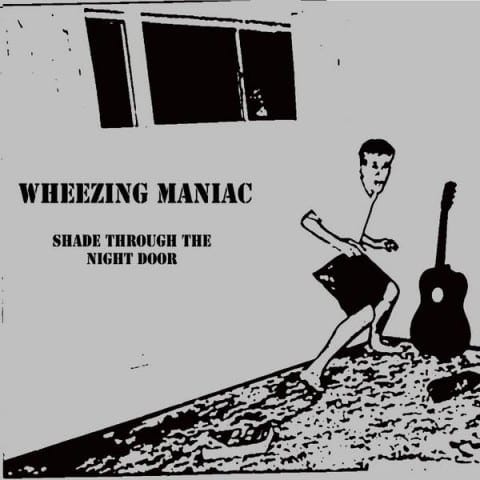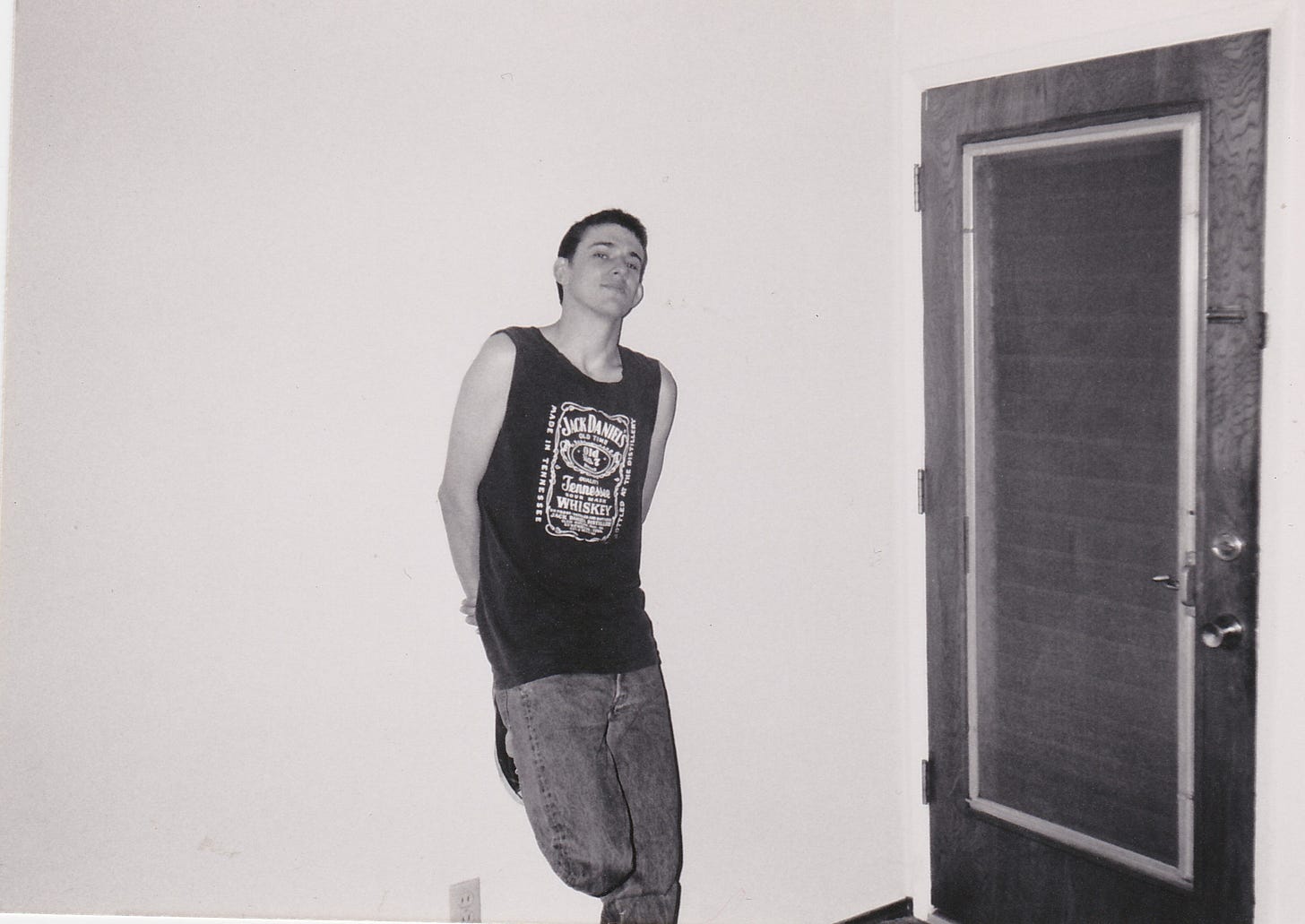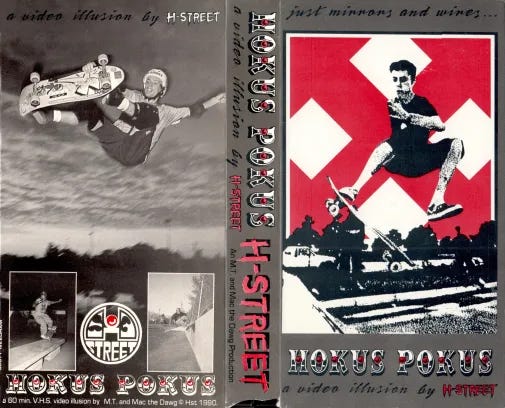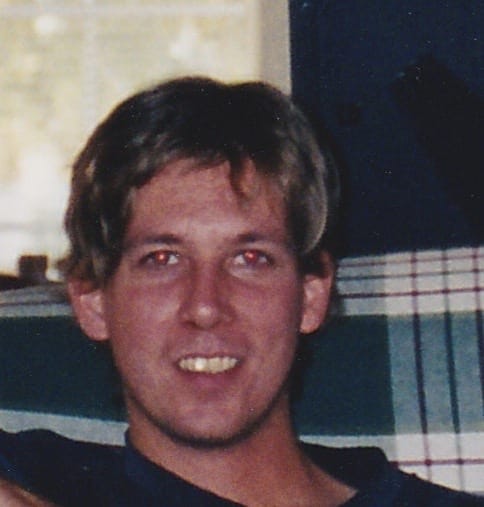Head to your preferred mapping source and look up El Centro, CA. It’s a small bordertown located 113 miles east of San Diego and 10 miles north of Mexicali. The most populous city in the Imperial Valley, El Centro is known for its agriculture and US Border Patrol station as well as being the birthplace of Cher. As you’ll read in the interview below, it’s hot as shit. We’re talking 350 days of sunshine and less than three inches of rain per year. Winter in the mid-60’s sounds like a dream. Summer staying in the 70’s overnight and well above 100 in the daytime? That’s a little less glamorous. From the sweltering heat of this mid-20-thousand population circa the mid-80’s emerged Wheezing Maniac. A unique concoction of personalities to match a truly singular sound. It’s the kind of approach that smaller towns seem to incubate, with less options and influences perverting the process.
It’s not like Wheezing Maniac sounds completely alien. The Minutemen and Black Flag influence is apparent. They’re very obviously a punk band rooted in the sounds of the 80’s, but man, they just aren’t capable of playing it straight for too long. “Don’t Come Close” is a straight up hardcore-leaning burner for 45 seconds and then suddenly goes mid-tempo with spoken vocals for the closing quarter minute. It’s a real stew. They go in a lot of directions without ever completely disconnecting from punk. The dual vocal-ed tale of “I Forgot The Ham.” The sheer creepiness of “Get in the Car.” Each track has its own feel, but the whole record is glued together by the odd sense of humor. I’ll absolutely poo-poo all over any band that tries to be goofy, but a band that dabbles in absurd humor? I might be their biggest fan. Dead Milkmen, that kind of stuff. The kind of weirdo off beat approach that can’t be faked.
Wheezing Maniac should have been that weird punk band that Ween fans liked. Or that punk band that Beck dragged along to open his first big tour. Or if ya want to relate ‘em to modern times, they should’ve been a seed for the whole Egg Punk scene. Yeah, yeah, I know, Egg Punk’s a dirty word these days, but Wheezing Maniac had outsider quirk a-plenty. Shade Through The Night Door woulda had bowlcuts tripping over each other had it come out on Lumpy Records circa 2015.
Unfortunately they only managed some demo tapes, a split 7”, and a few shows in their lifetime. The most enduring part of their legacy being “Dollar On A Platter” and “Don’t Come Close” appearing in H-Street’s street skating masterpiece Hokus Pokus. Putojefe Records saved the day, assembling the LP and releasing it into the world.
Imagine seeing the picture above while randomly cruising through some corner of Spotify. As a curious individual, I was intrigued. Most often, these sorts of excursions are momentary skims through records that are obscure for a reason. The Maniacs proved that you can’t stop digging. Not now, not ever. So I wrote up a batch of questions to shoot their way. In doing my due diligence, I sought out whatever scrap of info I could find on the band. Doing so, I found an interview with Hang Up Magazine that answered nearly all my questions. So I wrote a (mostly) fresh batch of questions. Companion pieces, read ‘em both for a bigger picture.
At last, the interview with Marvin Munson of Wheezing Maniac, a band that I’ll be raving about how “they should have been a cult classic” until the end of my time.
Was there a scene in El Centro?
The thing you have to understand about El Centro is that it's very small, and very, very hot. Like 118 in the summer. It would get so hot that if you were riding your skateboard on the sidewalk and rolled off onto the street the asphalt would be soft because the tar was melting and your skateboard would instantly slow down from hitting the street. Living there can become oppressive and it was economically depressed. Nobody travelled. If you asked someone what they were doing next week, they were never going to France. It's not like I'm slagging the place, everyone will tell you this. So I think the environment bred a certain kind of mindset. I'm not sure Wheezing Maniac would have gestated the same in another area. I believe the Bluegrass great Ralph Stanley said that to play in his band you had to come from a certain mountain region of Virginia or you just couldn't play the music right. You didn't have it in you. That sort of thing.
But was there a scene? Well, no, musically. Not for us at least. We knew the skateboarders in El Centro who were all punk rockers but not necessarily musicians, and we knew a much older guy who would play, like, Bob Seger covers in the Denny's bar (The Amigo Room) using those bass foot pedals while he sang and played guitar. A one man band of sorts. He would buy us beer when we were too underage, and give us marriage advice at 16. And we knew a guitarist into Frank Marino and Mahogany Rush who would tell us, "I'm not going to set foot on stage until I'm 100 percent sure I'm ready." But you know what happens if that's your mindset, right? Where were you going to play anyway? There were just a few rundown bars with produce workers and welders trying to forget their week. Did they want to hear Wheezing Maniac at the end of it? Probably not.
Later on, in San Diego, there was a scene of sorts, but we were sort of outsiders being transplants.
How did you get into punk?
When I was in 5th grade (so what is that, like 11 years old?) Mike Byrd, the guitarist for Wheezing Maniac, brought over the Sex Pistols album and was like "listen to this, they say 'fuck' on it" and he played me “Bodies,” and it was pretty shocking at the time. Like how can that even be possible? You know, this was pre-internet and Kansas was on the radio and Leo Sayer. I don't know where he got it from. Then, like a year later, in 6th grade, I think the tv show 20/20 did a piece on the Sex Pistols, saying how shocking punk was. I went to the local record store and ordered Never Mind the Bollocks and was waiting for it to come in. Then I was taking a nap after school one day, and they called and talked to my mom instead of me and said the record was in and she went down and bought it for me while running some errands. When I woke up, the Sex Pistols record was waiting there for me, as if by magic, and I was really excited to hear it. I always appreciated my mom for that, but I doubt she knew what the music was like when she bought it.
Then later, in high school, it was mostly Mike Byrd suggesting things. He used to be ahead of the curve on a lot of things, but I think I was into the Minutemen before him, and a few other things. I took the GED and left high school and started working at the Food Palace bagging groceries (RIP Food Palace). I would order Minutemen records out of the paper SST catalog and then skate home on my lunch break and check the mail because if you leave vinyl records out in 118 degree heat they don't last long.
What was the band aiming for? Did you have particular bands in mind when developing your sound?
Do you know how some bands will have some weird set of influences when you ask them, and you'll see an interview with, say, Jesus Lizard and they say that their biggest influence is Dean Martin or some shit that doesn't add up? Not that they've said that, but using that as an example. I wish I could tell you that Wheezing Maniac had some weird set of influences, but it was pretty much exactly what you'd guess... Devo, The Minutemen, and Black Flag. I don't think that we were trying to emulate them, but when you are that young I think you wear the influences on your sleeve a bit much. I mean there was a lot of other stuff thrown in there like Syd Barrett, AC/DC, Black Sabbath, and Gary Numan, but the idea was to have it be weird punk. Mike liked Metal more than I did, and you hear that influence a bit in some Wheezing Maniac stuff like “Don't Come Close.” Al didn't listen to punk or metal at all, he was his own man. That's why Mike wanted him in the band. And Dave Brummitt I think was probably also into Metal and maybe Christian Rock, but he didn't write for our band. He played bass and sang “Seasonal Inspector.”
That being said, there were a few odd influences in there. We loved the song “For Love” by Herman's Hermits, and we loved The Commodores’ “Brick House,” but I guess everyone does. We used to dig Chris Haskett on that first Rollins Band album also. That album seemed a bit more quirky and hip than where Rollins eventually went with that band.
If you listen to Mike Byrd's guitar solos in Wheezing Maniac, I'm not sure where that very odd construction and meter was influenced from. The “Dollar on a Platter” solo for instance, who would play something like that? It's hard to follow the logic of it. I know there's people like Robert Fripp or Adrian Belew and others who play those unusual runs, but I'm not sure any of that was on Mike's radar. For the guitar solo on “Pine Valley Bridge,” the slower version, he told me, "You know when people flip the tape over and record the solo and then it plays backwards while the finished track plays forward? I'm going to try and make it sound that way except while playing it forward." And he gave it a shot. I will leave you to be the judge of whether that worked, but I think it's a cool solo.
The sense of humor is really offbeat. Did this come from a particular person or was it a product of friends playing off of each other?
That was almost entirely Mike. He had a very peculiar and fun sense of humor. His was the vision in that respect. I tried to keep up with him, but I couldn't.
How many shows did Wheezing Maniac play? Anything significant you remember? Who did you play with?
3 shows only, in San Diego. I think at least 2 of those shows were with F.U.N. from the 7" and there may have been some other San Diego bands from that scene, but I can't remember exactly. It definitely wasn't a big punk show line-up, but if someone was a fan of the 7" they would have been good shows to be at since both bands were playing. The first show we were ever going to play at, we got bumped. I had a super high fever, and they wouldn't let me into the club until it was time to play because I was underage, and you could be onstage as a performer, but not in the club. I think Mike was inside somehow. I think maybe he had a good fake ID, but I was anxious to play, but then also sick as a dog, and was just sitting in the car alone with a fever in winter. He or someone else came and said we weren't going on and I think I was kind of relieved, and I drove home and unpacked the drums. So it should have been 4 shows.
Were the songs just a series of demos or did you have proper recording sessions?
As far as I was concerned at the time, those were the finished versions of the songs. I have a feeling that I didn't even know what a demo was, and if you had told me "It's a song you record so that you know what you are going to do when you record the song" I probably would have asked "Why don't you just record the final song?" Wheezing Maniac was meant to be punk rock though, so it wasn't like "later on we'll record this with the horn section." I doubt that by any current understanding of the term they would be considered "proper" recording sessions, but I think that given the circumstances they came out pretty decent recording-wise except a few cuts. When Putojefe sent the test pressings for the vinyl LP of Shade Through the Night Door, I went and played them to my friend Darryl from Le Shok and he was like "dude this sounds really good" because he knew the songs from before, and I was pretty stoked that it finally got a good sounding vinyl release because the Tombstone release was so fishy. People should get the full length vinyl on Putojefe for all its analog glory.
In your interview with Hang Up Magazine you mentioned tapes. Were the LP songs available when you were a band or is this the first time they've been compiled?
This is the first time all in one place, but they were available as individual EP's on tape. They were only available via tape through Maximum RocknRoll and whatever record stores would let us put them in there. If you are familiar with that review section of Maximum RocknRoll, they used to review all sorts of DIY punk stuff, so we would send it in and we would get a pretty decent amount of orders for tapes just based on that. We would get responses from people all over the country saying they loved the band, which was encouraging and somewhat unexpected. Those were actually cool times pre-internet because it made everything so niche, and when you'd find some underground band you'd like, it might be waaaay off the radar, whereas nowadays, at the least, everyone has a Spotify account if you are making DIY music.
Back then, you could go into record stores and they'd have tapes that people totally self produced and you could buy for like $2.00. This was later in San Diego, which was a bit hipper. That shit wouldn't fly in El Centro. If you brought your self produced tape into a record store in El Centro they would tell you to go send it to a record company. There are some things that are definitely better about the online music industry we have today, for fans at least, but in some ways the magic is gone.
Is there more material out there that hasn't been released?
Only the original, slower version of “Dollar on a Platter” with Al singing, and our cover of Gary Numan's “She's Got Claws.” We played a few different covers at the live shows but didn't record them in-studio. The Gary Numan cover has our own original music, so it's not really a straight cover, sort of like Devo with “Satisfaction.” I might release them as a single someday. At the live shows I remember covering The Ramones and Van Halen.
How did the split 7" come about? Were F.U.N. friends of yours?
Yeah, we knew them. The guys in F.U.N were real deal punk rockers, who would drink, get into fights, and sneak into shows because “it's our scene, we aren't going to pay." They were a really good band and had some great songs. I played bass on the 7" because they were short a bass player at the time, so I'm on both sides of that 7" I think. They did have some sort of a demo, or maybe it was a live rehearsal tape, that I learned the songs from. The band used to play a cover of “Happy Farm” by Rudimentary Peni live, but I don't know if it got recorded. Later on Dave played for Tiltwheel.
Has anyone ever approached you to do a reissue?
No one has approached us to do a reissue. I would only do it if it had a holographic version of the original cover with a Dolby Atmos remix in a limited run of 50 or something like that.
How did the split end up coming out on Fred Cole's Tombstone Records?
I don't know who arranged that situation, but I do remember we had problems with it the whole way. We paid for it to be pressed, but I thought it was through a normal record pressing place where we were going to name the record company etc., but then it came back and said Tombstone Records on it, and the transfer was poor, and it lists both 33 RPM and 45 on the label. At the time I thought the green sleeve was terrible, but the concept was good enough for Charlie XCX forty years later. Now it's sort of a collectors item. The full length on Putojefe records has a much, much better sound quality and pressing so I would tell folks to buy that instead of looking for the 7". I'd be curious to know the history of Tombstone Records myself though.
I'm sure we also sold that 7" through Maximum RocknRoll, and then we'd take it into stores on consignment. Mike told me that Jello Biafra ordered some copies. I remember driving it up to Zed Records in Long Beach to drop it off, and thinking "this looks like a pretty nice area to live” and then I ended up living not too far from there later on after we moved to Los Angeles. Zed was a pretty famous punk record store. They wouldn't take checks though, because you shouldn't take a check from a punk rocker. They had a Mexican place next store that served a great chile relleno burrito (RIP El Cilantro) and I started going there all the time.
I think there's some sort of story about Bob from F.U.N. just taking the newly minted copies of the 7" and throwing them into the ocean because the sound was bad, thereby even further reducing the limited run of 200. That might be an urban legend, it might have been the test pressings, I'm not sure.
Were you familiar with H-Street and their influence on skating when your songs appeared in Hokus Pokus?
Not even a little bit. I didn't know the song was on there. Mike Byrd was probably aware of their influence because he was more dialed-in to skating culture than I. If he did know though, it's pretty inconceivable to me that he would know it and not mention it to me, so he might have been in the dark a bit too, and least that the song was on there. For years I didn't know we were on that and thought only 10 people knew of Wheezing Maniac. People would tell me "you're on a skate video" but I thought it was something someone made at home to dub for their friends because everyone was DIY.
How did Shade Through The Night Door come about? Where does the title come from?
It's dumb, so I hate to say it, but we used to call the radio station in El Centro when we were kids, real young like 13, and request stuff that didn't exist. We would call and request songs off of the album "Shade Through the Night Door" because we thought it sounded like an actual album title.
Later on we named it that when I compiled everything for digital release, and the Putojefe vinyl was also named that.
Are you still playing music?
Still playing music a bit, but not live as of lately. I've been working on a project with the aforementioned Darryl from Le Shok. If you don't know that band, they were one of the best punk bands of the last few decades and you should check out We Are Electrocution. Don't view the cover with your kids looking over your shoulder though, or your parents. My mom wouldn't have brought that home to me while I was sleeping. The project with Darryl isn't punk rock though, it's pretty mellow.
There's also a band called The Dropas that has me and Mike Byrd together on the first album. That's semi recent, before he died. Do you know how William S. Burroughs and Brion Gysin had that cut-up technique where the theory was if you cut up the present the future seeps out? Well that's what The Dropas was aiming at, except musically. Mostly just randomly collected bits of riffs or language from Mike and our friend Ron that I then tried to assemble and graft onto a structure to make a song via modern technology. I think it came out great, but you would have to be the judge. It's on Spotify, so give it a listen. I think the future is definitely seeping out though.






![Fully Unnecessary Noise / Wheezing Maniac – Split 7" – Vinyl (7", 45 RPM + 4 more), 1989 [r14928690] | Discogs Fully Unnecessary Noise / Wheezing Maniac – Split 7" – Vinyl (7", 45 RPM + 4 more), 1989 [r14928690] | Discogs](https://substackcdn.com/image/fetch/$s_!Tx7L!,w_1456,c_limit,f_auto,q_auto:good,fl_progressive:steep/https%3A%2F%2Fsubstack-post-media.s3.amazonaws.com%2Fpublic%2Fimages%2Fe14e144b-358e-4b7c-9104-f2bf9accb2c1_599x581.jpeg)


I think I remember the songs on Hokus Pokus?!?! I had that VHS and played it thousands of times over the decades. I'm gonna have to take another listen now! Thanks Dan